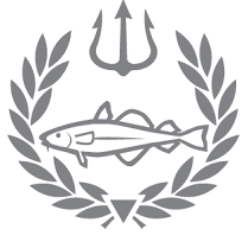Recently I had the great opportunity to go out with Joe and Lauren Romeiro for a second time. We headed out on their boat the Warfish with the goal of filming blue and mako sharks. This time we didn’t go so far, only a couple hours out to sea off the coast of Rhode Island. We started chumming for sharks in the late afternoon, and instantly had more luck than we did with the porbeagles. Starting in the late afternoon and continuing into the night, we had a continual presence of decent sized sharks. My job on the boat was to do the behind the scenes filming, shooting with a Sony A7S and RED Helium to capture what it’s like to film sharks in the middle of the ocean.
Once the sun set, a large 8 foot mako shark showed up alongside the boat, and we started to really get into the filming. Lauren took her turn first, laying with her underwater camera hanging off the side of the boat in the water and filming the shark as it swam by. After about half an hour of filming and a few close calls with the shark, Lauren was finished and I got to take my turn. Luckily, the big mako had already left and an 8 foot blue shark had taken its place. Blue sharks aren’t quite as fast as makos and are a lot less powerful, so I was happy to get my first chance at shark photography with the more manageable species. To photograph the shark, I copied Lauren, lying with my arms hanging down into the water, and holding an underwater camera fully submerged beneath the sea surface. The blue shark was sleek and beautiful, illuminated by flood lights pointing into the water off the side of the boat. As it came near, boat captain and shark wrangler Mitch threw a large piece of fish on a long line into the water. The shark spotted it and quickly chased it as Mitch drew it in, right towards my waiting camera. When the bait was a few feet in front of me, Mitch pulled the bait out of the water and the shark turned right in front of the camera as I panned to make sure the shark couldn’t get between the housing and the boat. I got soaked by the waves for the next 45 minutes and struggled to hold my heavy camera as the sharks darted towards me. After I was finished, my heart was racing for the next couple hours, the adrenaline rush of filming the massive sharks not wearing off until 3am.
The next morning, we tested Lauren’s new underwater camera technology that she had specially developed for her phd project. These underwater cameras, called BRUVS, can be dropped deep into the ocean. Equipped with a bait box, light, and a continually running GOPRO camera, they monitor what comes to check out the bait far underwater, that we may not see on the surface.



